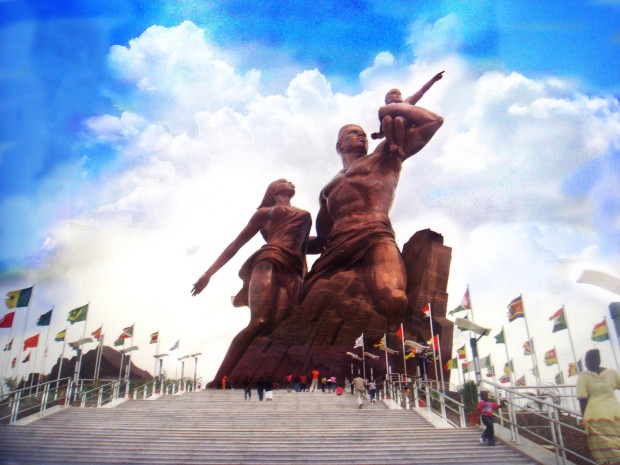
An image of the African Renaissance Monument, which was constructed by North Korea’s Mansudae Art Studio in Dakar, Senegal
In Pyongyang, North Korea, a significant portion of government money is spent on upholding a national image. There’s a colossal hotel under construction to showcase the country’s prosperity, and due to costs, it can’t be finished. There’s a complex system of roads to give the city a feeling of modernity, but due to a shortage of oil, there are barely any cars. It’s no coincidence, then, that North Korea has honed its ability to cheaply construct expensive looking facades.
The country’s exceptional capacity to build illusions has caused a recent wave in the exportation of public art to countries around the globe. As reported by recent articles in Slate and Businessweek, North Korea has exported monuments to 15 African nations like Ethiopia, Egypt, and Senegal, as well as non-African nations like Cambodia, Germany, Malaysia, and Syria.
All this recent production is not new. Rather, It’s the half-century long rise of the global North Korean aesthetic. This aesthetic looks surprisingly Disneyfied, a term which author Karen Klugman defines as the “application of simplified aesthetic, intellectual or moral standards to a thing that has the potential for more complex or thought-provoking expression.” This imported aesthetic, this Disney despotism, has a purpose. Seeing as many of these nations, North Korea especially, have dire human rights records, to perpetuate a sense of false innocence can be politically helpful for those in charge.
For North Korea, the exportation of this public art and its aesthetic is paying off. As of 2011, the country has earned $160 million in commissions from international governments to build and export colossal sculptures. Most of the exported sculptures are gargantuan, many are made for non-aligned nations, and all of them share an aesthetic that is unmistakably North Korean.
The African Renaissance Monument, exported by North Korea’s Mansudae Studios to Senegal, is a 160-foot bronze sculpture built between the years of 2006-2010. President Abdoulaye Wade, whose presidency was marred with allegations of corruption and nepotism, built the monument to herald “a new era of African Renaissance.” Like in North Korea, the cartoon-like body shapes and hopeful, glorified message stand in contrast to the surrounding desolate landscape filled with poverty.
However, in this political climate, unlike in North Korea, dissent is tolerated. Senegal MP Ndeye Fatou Toure described the monument as an “economic monster and a financial scandal in the context of the current [economic] crisis.” Djiby Diakhate, a sociologist at Dakar’s Cheikh Anta Diop university, told the Associated Press: “Senegal is going through a profound crisis. Our economy is dying. People are struggling to eat. We should be spending money helping people survive.”
In Damascus, the 1973 October War Memorial Museum (1999) filled with murals designed and painted by North Korean artisans from Mansudae, seeks to send a hopeful militarized message to the people, in light of the fact that the Syrian and Egypt October war fought against Israel ended in humiliating defeat. The entirety of the museum is a cover up of the reality of this war.
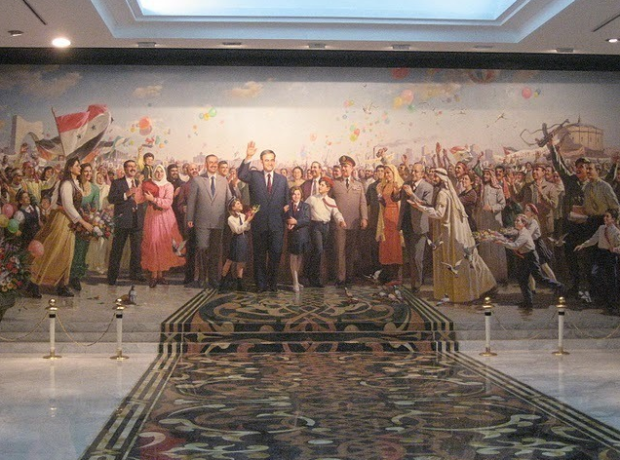
a panorama painted by North Korean workers at the 1973 October War Memorial Museum (1999) in Damascus, Syria. The mural was a gift from North Korea to Syria.

A very similar panorama from the Victorious Fatherland Liberation War Museum in Pyongyang.
Interestingly, one of the North Korean painted panoramas in the museum, which depicts the former Syrian President Hafez al-Assad in ecstasy as he is swarmed by his people, copies from the Victorious Fatherland Liberation War Museum in Pyongyang. In Pyongyang, this museum is a creaky building that showcases artifacts from North Korea’s “victory” over the United States during the Korean War. In the October War Memorial Museum panorama, Hafez al-Assad replaces former North Korean dictator Kim Il-Sung and dying Israelis replace defeated Korean war-era Americans. In both murals, despite the government’s war crimes against its own people, the populace throngs its leader, cheering him on with a smile.
This copy-paste populist art isn’t restricted to Syria. This Mansudae-built monument (2001) to Laurent Kabila of the Democratic Republic of Congo imagines the dictator as a Santa Claus-like figure; his pointing stance seems directly pulled from similar monuments of Kim Il-Sung.

The Communist Derg memorial built by North Koreans and donated to Ethiopia (1984)
The Communist Derg memorial built by North Koreans and donated to Ethiopia (1984) tells another revised version of history, one that is lying mostly by omission. The monument commemorates the Derg, a military council which overthrew Emperor Selassie in 1974, as heroes brandishing guns and ploughshares. But unrepresented in the monument is the 15 year civil war, and the subsequent nationwide famine, caused by the Derg’s coup d’etat. In this sense, the monument is more Stalinist than the other exported North Korean monuments: it glorifies the masses rather than a single ruler.
However, the Derg, who staged a coup d’etat against Emperor Haile Selassie in 1974 that sent the country into a 15 year civil war, were largely responsible for the subsequent nationwide famine. Included in the monument is a depiction of the former Emperor Haile Selassie I ignoring the hunger of the people, followed by an image of demonstrators overthrowing the throne, followed by an image of a liberated people. This bizarre narrative contradicts history: the revolution didn’t stop famine, but in fact made it worse, and resulted in a civil war, guerrilla warfare, and horrific humanitarian violations. Essentially, this monument romanticizes and erases a moment of struggle for the vast majority of the population, many who still remember living under the regime.
These four monuments, three of which were designed by North Korean artists, and the first designed by the Senegalese designer Pierre Goudiaby Atepa, employed North Korean workers to build them in the foreign nations. Thus, there’s a consistency in the details of their craft. German officials, who commissioned Mansudae Studios to rebuild a fountain destroyed in World War One, complained of angular, cement block haircuts of the depicted women, which had an unwanted soviet touch. In Benin, critics have called a North Korean built monument Stalinist, a cartoonish depiction of Africans, and even chauvinistic. And it’s true; looking at all of these exported monuments, you can see a specifically North Korean character, one that comes north Korean art and culture.

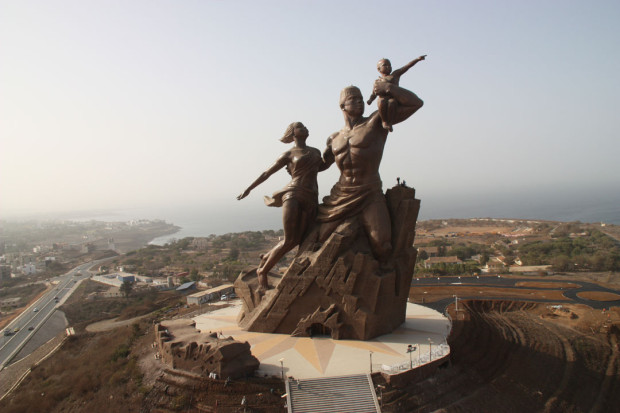
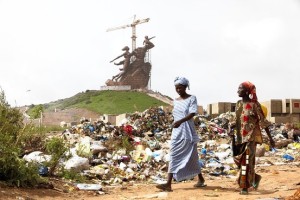
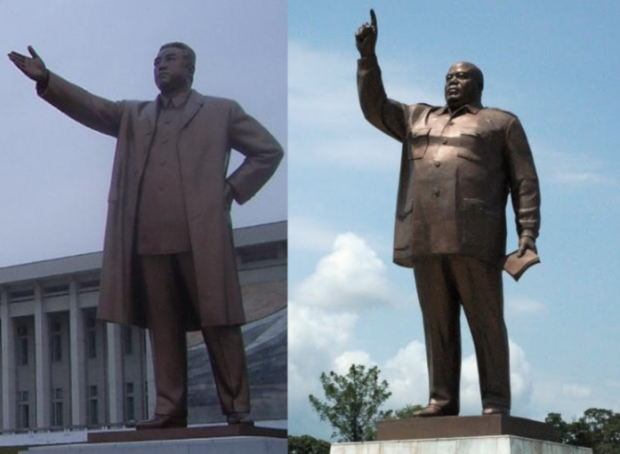


Comments on this entry are closed.